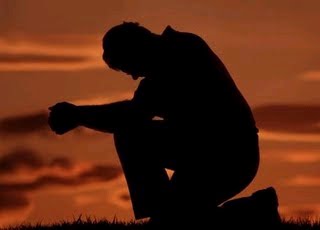
One of the most distinguishing parts of any Worship Service is the motions of the people and the pastor. In liturgical form there is a reason and rhythm to our motions and actions. As in all things of our worship, our motions focus our hearts and minds on Christ Jesus and salvation. Hence, even our movements are a participation in worship.
The major motions of the Divine Service
lie in liturgical positions which assist in the communication of the message of
the liturgy. As the pastor conducts the Service, there are two important
positions in which he leads: sacramental and sacrificial. In essence, these
positions represent who is doing the action – God or the congregation,
respectively. The sacramental position is
one where the pastor faces the congregation to speak the words of the liturgy
or when engaged in certain kinds of reciprocal dialogue with the congregation.
By facing the congregation, the pastor signifies that he is speaking “in the
stead” of God and “by the command of our Lord Jesus Christ.” Sacrificial
actions of worship include the Confession, Absolution, reading of Scripture,
proclamation of the Word in the sermon, much of the Communion liturgy, and
Benediction. Hence, the sacramental position is God’s actions toward His
people.
The sacrificial
position, then, is when the pastor faces the altar and speaks on behalf of,
or with, the people to God. This is our
reaction to God’s action in the liturgy. Sacrificial actions of worship include
Confession, Prayer, singing of hymns, Creedal Confessions, and various aspects
of responsive readings.
During the Service of the Word in the
Divine Service, the pastor generally stands in front of the altar so as to
highlight these two positions. When the Service moves to the celebration of the
Lord’s Supper, the pastor conducts much of the Service behind the altar as it
serves as the place from where the elements are consecrated and distributed.
The Communion liturgy has both sacramental and sacrificial liturgical acts, in
which the pastor remains behind the altar and faces the people for both.
Another motion of worship which is
commonly made during the Service is that of the sign of the cross by the pastor and the people. The sign of the
cross is marked by a cross X and may be made by all in remembrance of their baptism at various
points in the liturgy. The cross is generally made during the Invocation, at
the end of the Creed, during the Consecration, Blessing after the Distribution,
and Benediction (thought it may be made a number of other times). A person
makes the sign of the cross beginning at the forehead, down to the center of
the sternum, then right to left (ending over the heart).
Another motion which stands out is standing and sitting at various parts throughout the
Service. This is not mindless action, but the reason for the rhythm goes back
to the historic tradition that it is respectful to stand, especially in regards
to being in the presence of God. In general, we stand for the Invocation,
Confession and Absolution, Introit, Kyrie, Hymn of Praise, Creedal Confession,
reading of the Gospel, Prayer of the Church, Service of the Sacrament, and
Benediction. Other parts of the liturgy we sit, though if it is difficult to
stand or sit repeatedly, one may remain seated during the Service. Sitting is a position/posture of listening and meditation. It allows for thoughtful pondering.The rubrics (instructional words written in
red) of the liturgy help guide us in when we should sit or stand. The triangle
(Δ) before the final stanza of a hymn indicates a Trinitarian doxology and
invites the congregation to rise to sing.
In various parts of the Service, we also
have the option of kneeling. This too is
a position of respect and one of humble acknowledgement and service before the
King of kings. We have the option of kneeling during the Confession and
Absolution, prayers, while receiving Communion, and during special blessings.
In older church buildings, special kneelers are present for this very purpose,
but in modern times the kneelers are usually only kept in front of the altar
rail.
note: post 10/11 adapted from my brother's writings
No comments:
Post a Comment